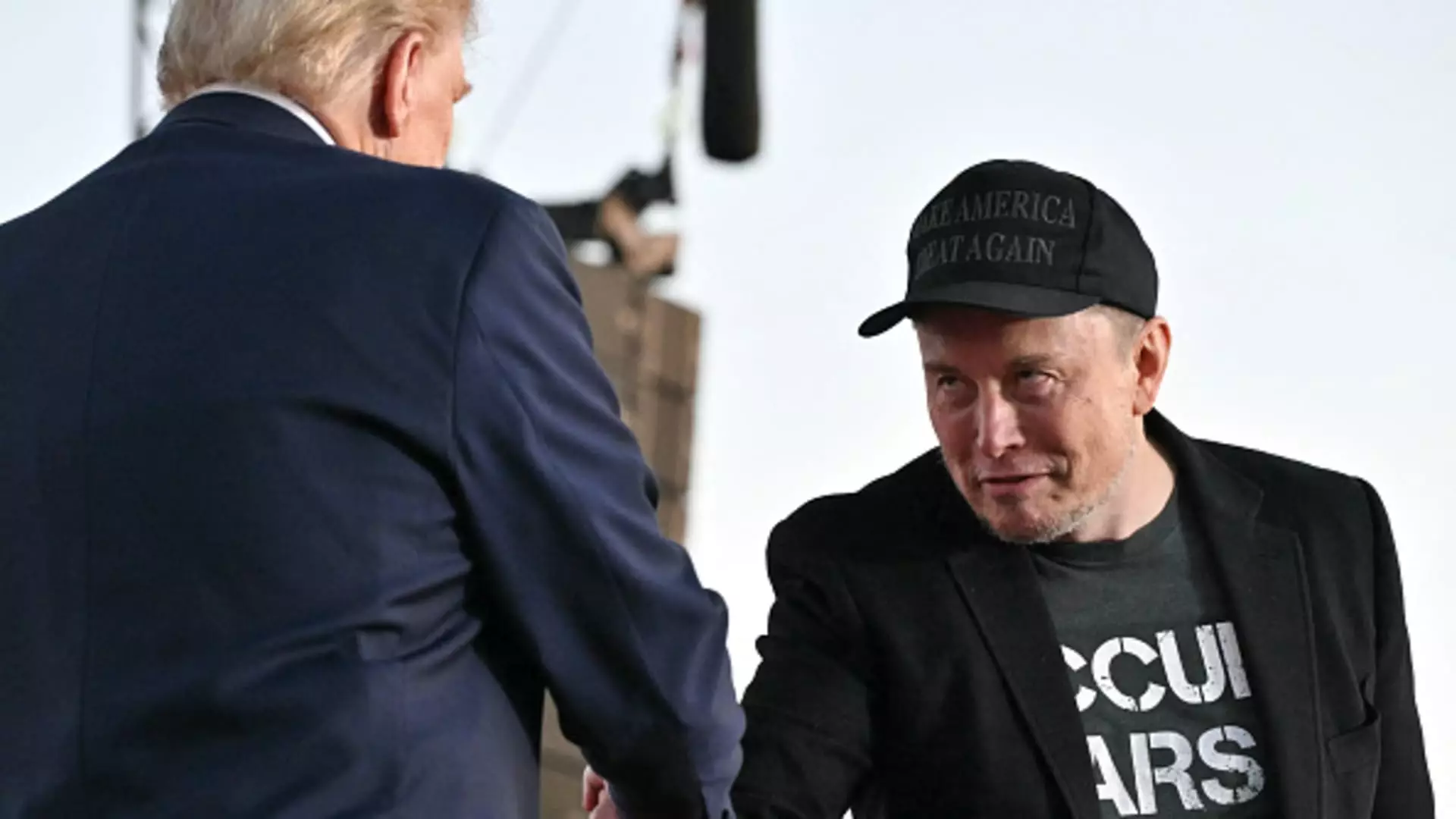The automotive landscape is undergoing a dramatic transformation, particularly with the advent of autonomous driving technology. The recent surge in Tesla’s stock, attributed to reports about the Trump administration’s focus on establishing a federal framework for regulating self-driving vehicles, underscores the interconnection between government policy and corporate fortunes. For a company like Tesla, long viewed as a forerunner in the electric and autonomous vehicle markets, this potential regulatory landscape could either be a launching pad for its ambitions or a stumbling block.
The prospect of a federal regulatory framework for self-driving vehicles signifies a notable shift in the U.S. government’s approach to emerging technologies. By prioritizing autonomous vehicle regulations, the incoming Trump administration acknowledges the necessity for clear guidelines and safety standards, which can ultimately foster innovation. For Tesla, these regulations may facilitate a more secure environment for launching their much-anticipated fully autonomous vehicles. Yet, they also must tread carefully; any regulatory missteps could set back progress and stymie Tesla’s ambitious goals.
Tesla’s aspiration to develop a fleet of “robotaxis” hinges on realizing its long-promised fully autonomous technology. While Musk has frequently touted the company’s progress, tangible results have been limited. Therefore, the balance between encouraging innovation and ensuring safety will be key. As the U.S. looks to the future of transportation, establishing a coherent regulatory framework could mean the difference between being an industry leader or falling short against competitors, such as Waymo, that have already made significant strides in deploying self-driving technology.
Musk’s evolving relationship with Donald Trump supports a narrative that could benefit Tesla significantly. By aligning with the political elite, Musk could leverage this to open doors for regulatory leniency that may favor Tesla’s swift development and implementation of self-driving vehicles. However, there is a notable risk in closely intertwining corporate interests with political affiliations; public perception and potential backlash could affect shareholder confidence and brand reputation. Tesla’s identity as a progressive leader in clean energy and innovation stands at odds with certain aspects of the current political climate, and balancing this narrative is essential for maintaining its public image.
Adding another layer, Trump’s establishment of the Department of Government Efficiency, as humorously dubbed “DOGE,” indicates an ambition to cut through bureaucratic red tape. This playful acronym and the Department’s concepts of reducing regulations align neatly with Musk’s vision of rapid innovation. However, whether the resulting policies will genuinely advance safety standards or merely expedite Tesla’s ambitions remains to be seen.
The road to achieving Tesla’s vision of an autonomous vehicle fleet is littered with challenges. One significant hurdle is the technological capability required for fully autonomous driving. Currently, Tesla’s Full Self-Driving (FSD) package still relies on human oversight. The transition to a system that operates without human intervention is fraught with risks, including potential accidents and ethical dilemmas that arise in complex driving scenarios. Musk’s ambitious timelines indicate confidence in overcoming these hurdles; however, the reality of technology adoption often lags behind projection.
Competition from other companies further complicates matters. Notably, Waymo has successfully launched self-driving cars on public roads, demonstrating that Tesla may not be the only contender in the race. As the industry moves toward a high-stakes environment, Tesla must not only accelerate its technological development but also carefully strategize its entry into this regulated marketplace. The potential for collaboration or competition with other automotive innovators is a critical consideration for how Tesla might navigate the future.
In an era where autonomous vehicles are on the cusp of reshaping our roads, the interplay between government regulation and corporate ambition will determine the pace and safety of technological advancements. For Tesla, a favorable federal framework could expedite the arrival of fully self-driving vehicles, potentially paving the way for a transformative future in transportation. However, the intricacies of government relations, public perception, and technological feasibility introduce a complex equation that must be meticulously navigated. As we look ahead, the marriage of innovation and regulation will be indispensable for realizing the dream of an autonomous vehicle society. Tesla’s journey is just beginning, but legacy and leadership depend on how deftly it can drive through this evolving landscape.


Leave a Reply